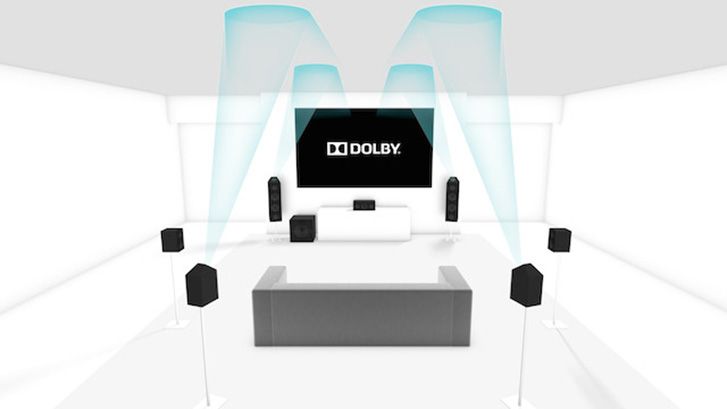Key Takeaways
- Dolby Atmos expands audio from horizontal to vertical, transforming the surround sound experience with 3D soundscapes.
- Dolby Atmos is not just for home theaters — it has made its way to devices like phones, tablets, laptops, and even music tracks for an immersive experience.
- Dolby Atmos requires specific hardware and sources, such as Blu-ray players, streaming services, games consoles, and even specific smart speakers, to fully enjoy its surround sound technology.
When watching a movie, whether in your own home or at the theater, sound quality is a priority as it makes the action more engaging, the emotional scenes more tear-jerking, and those laugh-out loud belly laughs even deeper. And ever since home theater setups grew bigger and better, the audio market has grown with them. Starting from simple stereo 2.0 or 2.1 setups, the popular sound setup quickly became a standard surround sound system with a 5.1 or 7.1 channel configuration.
Best TVs under $500: Cinema-like experience without the steep price tag
The best TVs under $500 have smart TV capabilities, high-end features like curved screens, and AI powered software.
Stereo evolution set the stage for Dolby Atmos, which delivers an immersive sound experience, taking the surround sound from the confines of the best speakers, and bringing it to more affordable soundbars or even tablets.
A brief Dolby Atmos history
Dolby Atmos, in essence, is a name for a surround sound standard. It was developed by Dolby and premiered in 2012 with the release of Brave in the cinemas, making its way to home theater setups only two short years later in 2014, and even to devices such as smartphones, laptops and tablets starting from 2016.
Dolby Atmos aims to change this by creating dynamic audio objects in addition to stationary audio channels, but also adding vertical audio channels that play sound from above you, giving you the real 3D soundscape.
Dolby Atmos is a redefinition of what we think when we say surround sound. While the older configurations, such as the standard 5.1 or 7.1, play audio around you, they lack the ability to dynamically move around. Dolby Atmos aims to change this by creating dynamic audio objects in addition to stationary audio channels, but also adding vertical audio channels that play sound from above you, giving you the real 3D soundscape.
How Dolby Atmos works now
The departure from solely relying on channels is where Dolby Atmos differs significantly from the previous surround sound implementations. Instead of relying simply on channels to make the sound spatial, the standard goes a few steps further. It operates on the basis of what’s called audio tracks.
These audio objects contain specialized metadata that provides information not only about which channel is used to produce the sound in question, but also allows the sound to move much more naturally, in order to create audio tracks tailored especially for singular objects.
Dolby Atmos can use audio tracks either as traditional channels, which means directing sound to play through a particular speaker, creating stationary sounds, or creating what’s called “audio objects.” These audio objects are then assigned to particular objects in the content, such as a moving car or a flying helicopter. This allows them to be heard as if they were really moving around the room, with audio channels playing sounds that are stationary, and audio objects focusing on things in motion. Dolby Atmos supports up to 128 audio tracks, so there is a lot of room for all the spatial trickery.
These audio objects contain specialized metadata that provides information not only about which channel is used to produce the sound in question, but also allows the sound to move much more naturally, in order to create audio tracks tailored especially for singular objects. With other info in the metadata, each audio object can be much more life-like than when using traditional surround setups.
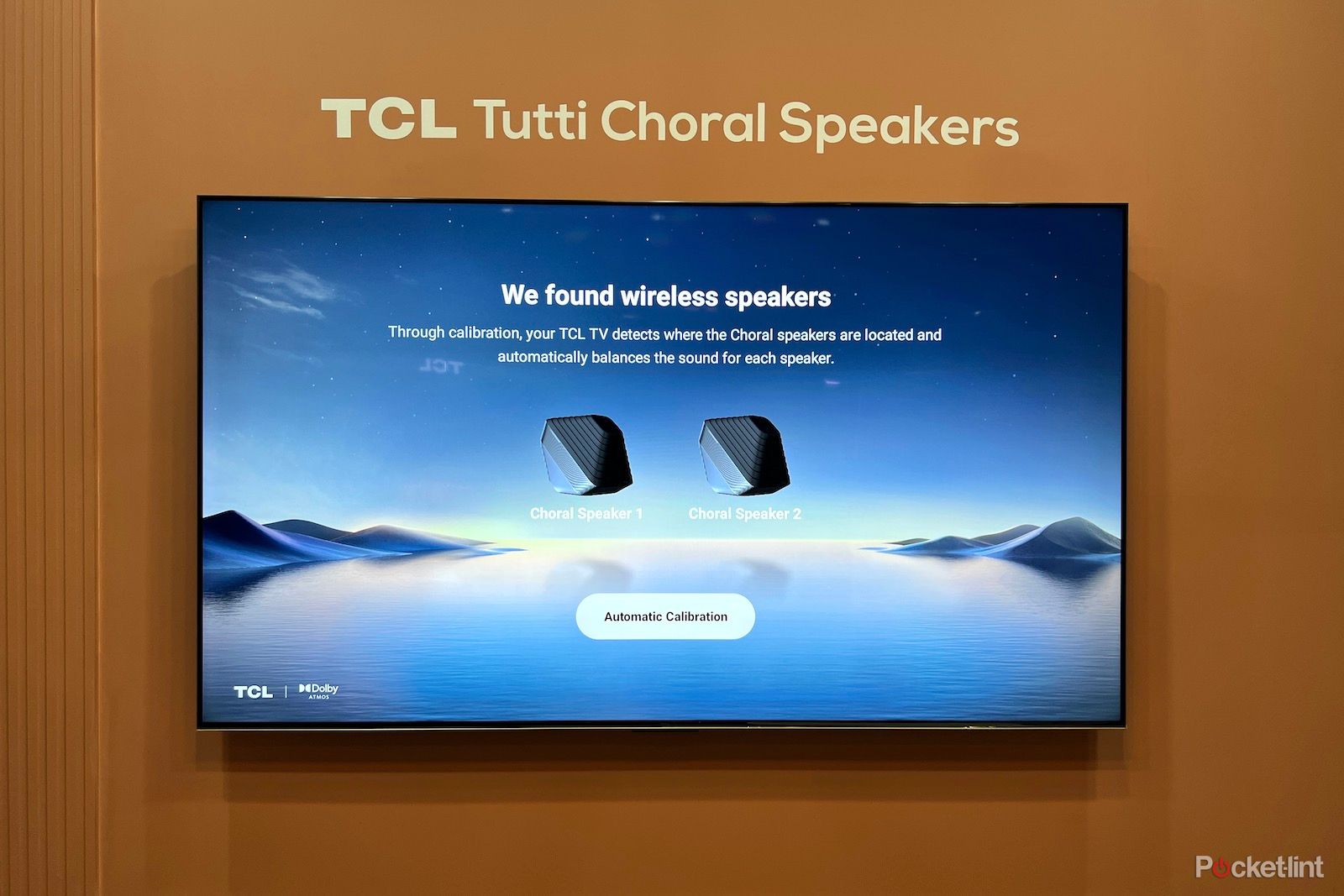
I tried out Dolby Atmos FlexConnect – could this be the end of soundbars?
Dolby’s new technology makes getting Atmos sound in the home easier than ever before – and that might spell trouble for soundbars.
How Dolby Atmos provides a 3D soundspace
Dolby Atmos also goes a step further when it comes to the speaker configuration that it uses. The standard surround sound home theater systems go for a 5.1 or 7.1 configuration, which is essentially five or seven speakers that surround you in a horizontal plane along with a subwoofer. Dolby Atmos goes away from this strict reliance, going for a more virtual surround sound with an additional, vertical plain.
Dolby Atmos goes away from this strict reliance, going for a more virtual surround sound with an additional, vertical plain.
What that means is that Dolby Atmos-enabled setups use similar horizontal channels, but also add additional up-firing speakers that bounce the sound from the ceiling, creating a 3D soundspace. Additionally, virtual channels also mean that Dolby Atmos can be enabled even on devices such as soundbars that use your room to essentially bounce the sound back to you, creating virtual surround sound that doesn’t need real, physical speakers behind (or above) you.
Dolby Atmos supported hardware: The basics
With the advent of Dolby Atmos, the requirements to get great surround sound have also changed. And even though there are still recommendations that you should follow to make the most of your surround setup, your awesome can sound amazing and give you incredible spatial sound with much fewer monitors than before.
For physical home theater setups, Dolby Atmos introduces new speaker configurations to account for additional vertical sound plain. They usually include the traditional 5.1 or 7.1 surround setups and add two additional speakers firing at you from your ceiling. This means you end up with speaker configurations such as 5.1.2 — five speakers around the room, one subwoofer, and two height channels. Of course, you can go much bigger, up to 64 speakers in total, but the 5.1.2 setup is the standard home theater goal.
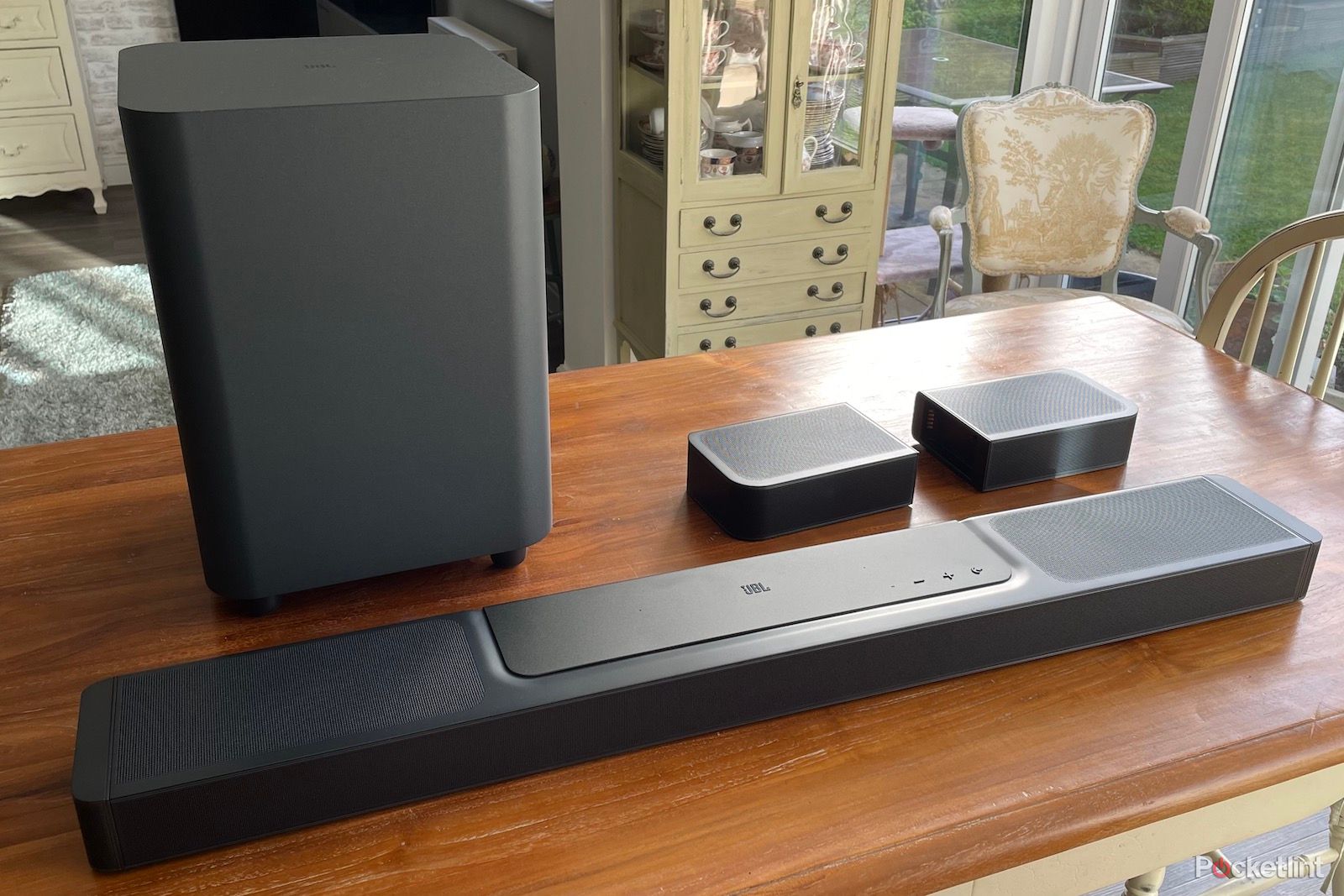
JBL Bar 1300 review: Big Atmos sound in a versatile surround sound package
This shapeshifting Atmos soundbar delivers a big performance across the board.
Dolby Atmos isn’t defined by the number of channels. In fact, Dolby Atmos is called object-based sound, as while its basis is 10 bed channels in a 7.1.2 setup, it can also have up to 128 individual objects that can be placed independently anywhere in a 3D soundscape, and move around freely, without being strictly tied to a particular channel.
Once again, this approach also means that these extensive surround systems, even though they are beneficial, are not necessary to get great surround sound anymore.
In-home Dolby Atmos is easily achievable
If you already have a surround sound system at home, getting it to be Atmos-ready is quite easy — you simply need to add ceiling speakers to the mix. However, this might be neither easy nor convenient.
So, the more common approach at home is to get upward-firing Atmos speakers to send the sound up to the ceiling and reflect it back down to the listening position. And, this is the form adopted by many speakers, AV receiver and soundbar manufacturers today.
Dolby
The more common approach at home is to get upward-firing Atmos speakers to send the sound up to the ceiling and reflect it back down to the listening position. And, this is the form adopted by many speakers, AV receiver and soundbar manufacturers today.
That being said, Dolby Atmos does not need to rely on physical speakers in surround configurations (such as 5.1.2 etc.) to give you exceptional spatial sound. In fact, most of the implementations of this technology nowadays rely on virtual surround — a technology that allows you to bounce sounds off the walls, creating surround sound even if your speakers are not physically positioned around you.
Essentially, even though Dolby Atmos still works best with physical speakers in at least 5.1.2 configuration, this surround sound tech also scales down very well, giving you great results on a huge range of products. It now even supports connecting to wireless speakers through FlexConnect, making your setup not only much easier, but also cable-free,
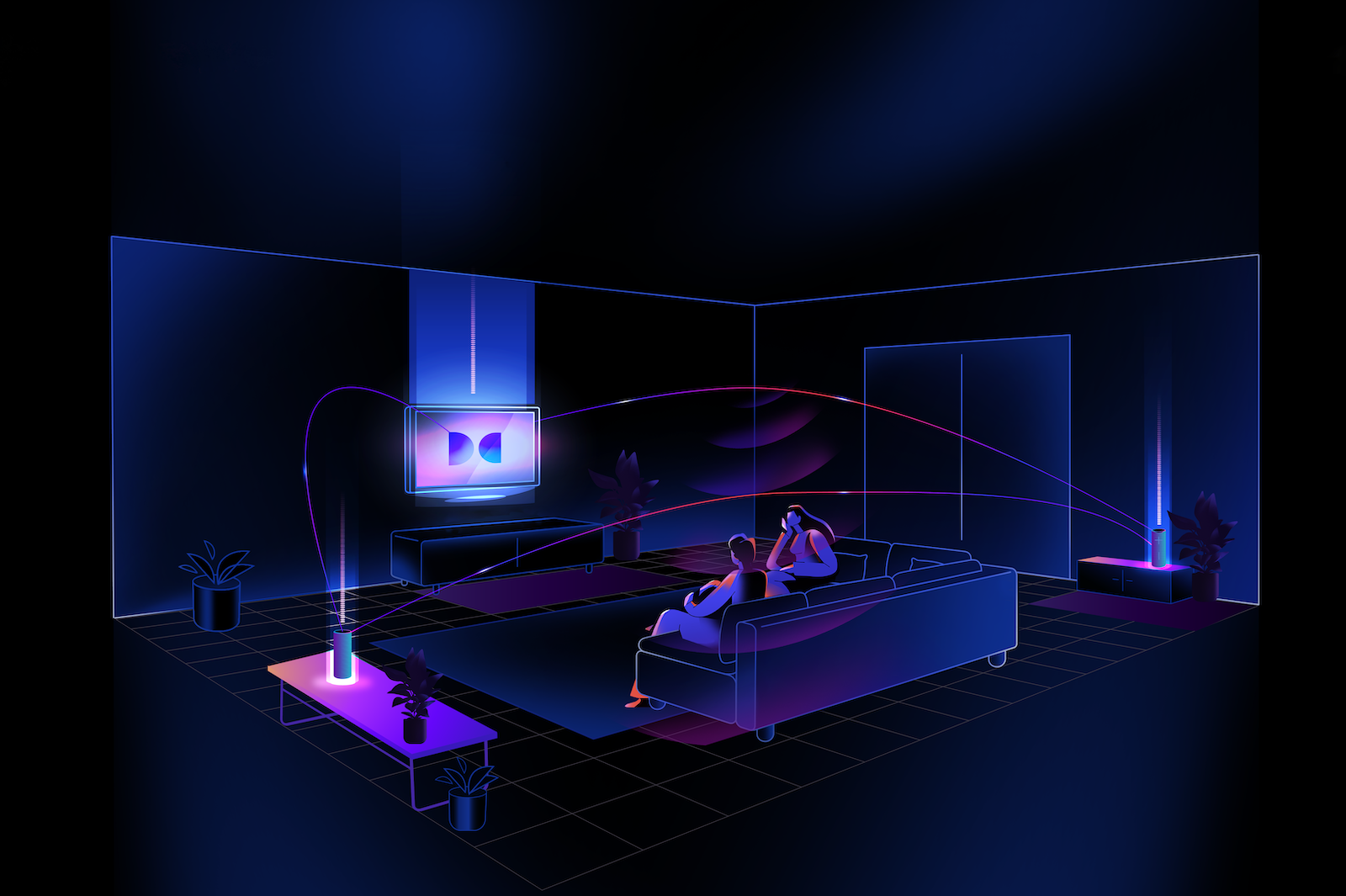
What is Dolby Atmos FlexConnect and how will it transform your home cinema experience?
Everything you need to know about the new audio technology aiming to transform your home cinema sound.
Hardware you need to support at-home Dolby Atmos
A source to play content from: You need to find a way to feed that Dolby Atmos signal to your speakers. The starting point for movie fans is likely to be a Blu-ray player — and you’ll probably want one that supports 4K Ultra HD. However, as long as the Blu-ray player has been set to output a direct bit stream signal, your Dolby Atmos-enabled receiver or soundbar should be able to decode the signal and send the height channels to the Dolby Atmos speakers.
A compatible streaming service: Media streaming is another area that supplies Dolby Atmos soundtracks. Netflix, Amazon Prime Video and Disney+ each support Dolby Atmos on movies and TV shows, as does Apple TV through its Smart TV apps and own set-top box. In terms of other streaming devices, Roku supports it, as well as Android TV boxes, such as the Nvidia Shield TV, and Amazon’s Fire TV. It’s also available through Amazon’s Audible platform on select audio.
You can use a games console too, as the Xbox Series X/S, Xbox One, Xbox One S, PlayStation 5 and PS4 all support Atmos soundtracks for films, either through streaming, with some games adopting the format too.
Many higher-end TVs now support Dolby Atmos as well, with built-in sound systems and up-firing speakers to support it natively, without additional speakers or even soundbars. It’s best to check though before you purchase your next TV, though, as some advertise them as supporting Atmos but can only offer it virtually, or pass it through to a soundbar or receiver.
Dolby Atmos isn’t just for home theaters, but has come to tablets, phones, and computers
In more recent years we’ve seen Dolby Atmos being talked about outside the in-home theater concept.
If it can play audio, Dolby wants to bring the Atmos experience to it. That means we are seeing laptops, tablets and phones stating that they offer Dolby Atmos support. Of course, the experience is quite different to what you’ll hear at home or in the cinema.
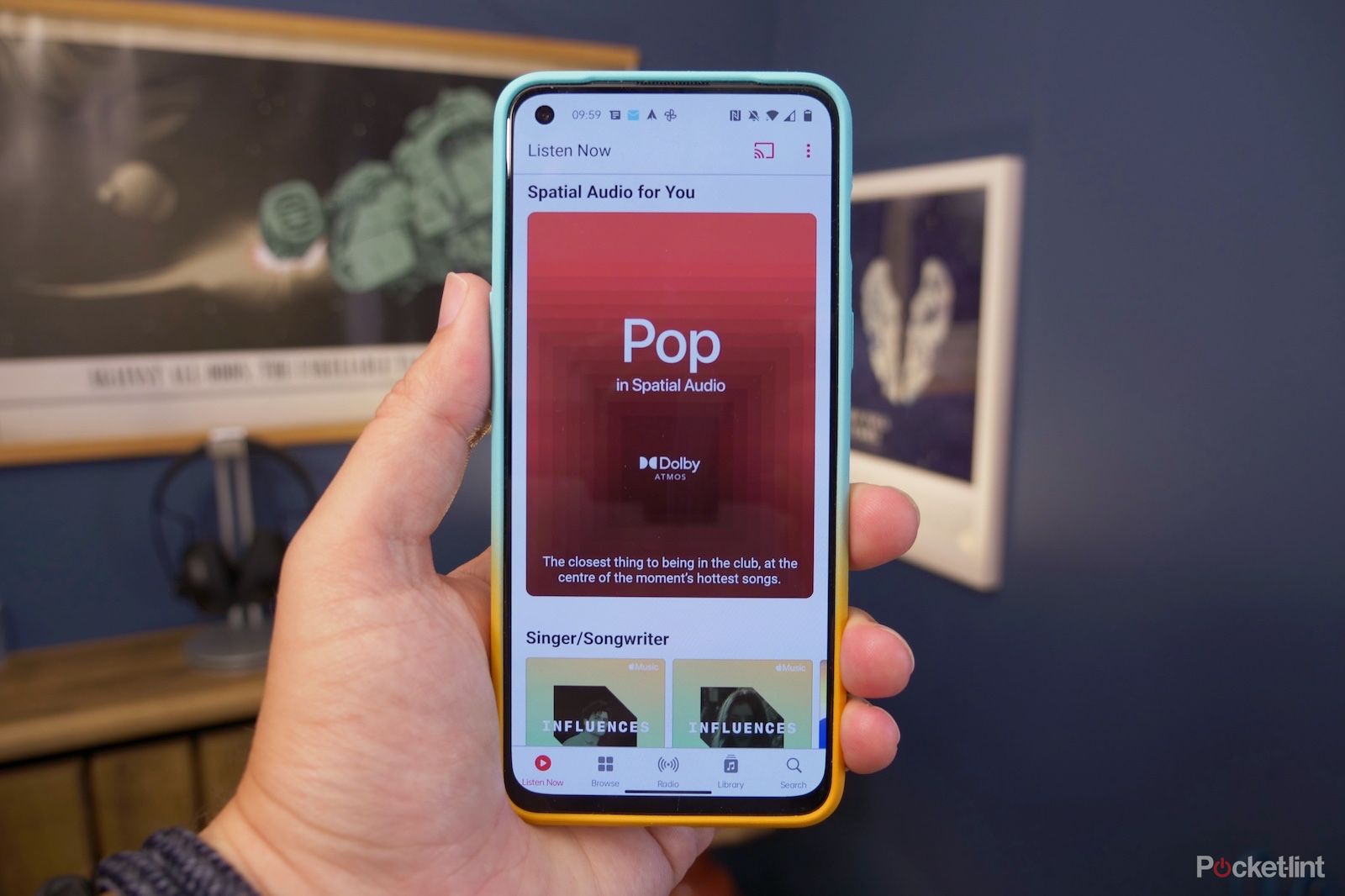
Spatial Audio with Dolby Atmos and Lossless now available on Apple Music for Android
No, Apple hasn’t forgotten about its Android users, Spatial Audio and Lossless are now available on your phones
In these cases, it’s about a more immersive soundscape. Yes, those devices sound better when the Dolby Atmos mode is turned on, but it’s not aiming at placing sound objects in space like you might get at home from your separate system or soundbar. It’s about creating a feeling of sounds being in different places, using some clever audio trickery that delays — just slightly — when sounds are delivered, to give a feeling of them being closer or further away.
That means your Dolby Atmos-enabled phone or tablet will not be able to give you the same spatial sound experience as your home theater setup, which shouldn’t be that surprising. Dolby Atmos branding on mobile does not require the same physical speaker setup — you should think about it more like software-enabled Spatial Audio in Apple headphones. It gives you the feeling of a more open, spatial sound, but without the clear definition and independent audio objects of the home-theater Dolby Atmos implementation.
What’s best about this standard is that you can, in theory, connect your Dolby Atmos-enabled phone or tablet to a Dolby Atmos home theater setup and use it as an AV source. These machines are also able to decode the full Dolby Atmos signal, so you could use them as sources for your true Dolby Atmos setup without losing out on all the spatial audio goodness.
Dolby Atmos has even come to music
More recently, we’ve seen Dolby Atmos move away from the home cinema space and into the music space, with Dolby Atmos Music. This is a spatial audio format, just like it is for cinema, but now with music tracks instead.
The music tracks have to be specially mixed for Atmos, so you can’t just play a regular song through an Atmos system and expect it to work. At the time of writing, Apple Music,Tidal and Amazon Music include Dolby Atmos music tracks in their catalogs.

What is Dolby Atmos Music and what do you need to hear it?
Dolby Atmos Music is a new spatial audio tech that promises to immerse you in a world of sound like never before. Here’s everything you need to know.
Of course, to hear them at their best, you’ll need to have the hardware that supports Atmos playback. Amazon’s Echo Studio does just that, as does Apple’s HomePod 2 and the Sonos Era 300.
You can also listen to them using any regular headphones and a compatible phone or tablet, but this will be a virtual mix as discussed above — using the speakers will provide a much more immersive experience.
Trending Products

